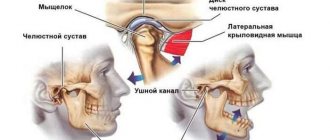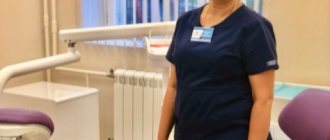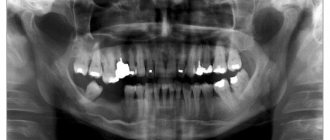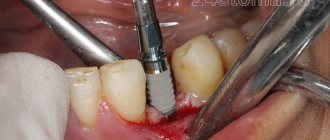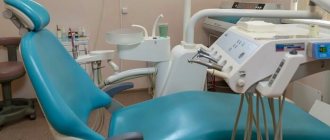Have questions?
Search for a doctor
Berezinskaya Anna Sergeevna Dentist-therapist, periodontist, doctor of the highest category Make an appointment
Vereshchaka Denis Nikolaevich Dentist-therapist, periodontist Make an appointment
Gasanova Zaira Romanovna Dentist-therapist, periodontist Make an appointment
Daurbekov Islam Isropilovich Dental surgeon, dental implantologist, periodontist Make an appointment
Zhukova Irina Petrovna Dentist-therapist, periodontist Make an appointment
Ievleva Liliya Nikolaevna Dentist-therapist, periodontist Make an appointment
Kadieva Niyat Mukailovna Dentist-therapist, periodontist. Head of the dental department at SM-Clinic on the street. Yaroslavskaya Make an appointment
Klimova Ksenia Evgenievna Dentist-therapist, periodontist Make an appointment
Kochieva Zamira Anatolyevna Dentist-therapist, periodontist Make an appointment
Martynova Elena Yurievna Dentist-therapist, periodontist, doctor of the highest medical category, Ph.D. Make an appointment
Romanova Elizaveta Aleksandrovna Dentist-therapist, periodontist Make an appointment
Rostovenko Inna Ivanovna Dentist-therapist, periodontist, dental surgeon, head of the dental department Make an appointment
Tyuryakova Natalya Aleksandrovna Dentist-therapist, periodontist Make an appointment
Tsanava Tamari Zaurievna Dentist-therapist, periodontist Make an appointment
Cherednichenko Victoria Aleksandrovna Dentist-therapist, periodontist. Head of the dental department at SM-Dentistry on the street. Yartsevskaya Make an appointment
Yurchenko Natalya Viktorovna Dentist-therapist, periodontist, orthodontist, candidate of medical sciences, head of the dental department Make an appointment
In dentistry, a periodontist deals with the diagnosis, treatment and prevention of periodontal pathologies. This word refers to all those tissues and structures that surround and fix the tooth in a certain place. Thus, the periodontium includes the bone tissue of the jaws, which contains the tooth root, the ligamentous apparatus located around it, as well as the soft tissue of the gums. According to statistics, periodontal diseases today occur in approximately half of all dental patients.
When is it necessary to see a specialist?
The following symptoms should be the reason for making an appointment with a periodontist:
- bleeding from the gums during brushing your teeth, while eating, or even occurring without any apparent reason;
- purulent discharge from behind the gum edge;
- sore gums when chewing food;
- change in the shade of gum tissue or swelling;
- the appearance of bad breath;
- mobility of one or more teeth, their looseness in the socket;
- exposure of the dental neck, which leads to pathological sensitivity and pain upon contact with hot, cold, etc.;
- buildup of plaque or tartar.
When to contact a periodontist
Patients who come to see a therapist are most often sent to the periodontist's office. After listening to complaints, collecting anamnesis, examining the oral cavity and identifying symptoms characteristic of gum disease, he gives a referral to a highly specialized specialist who is more competent in solving such problems:
- mucous membranes bleed during hygiene measures after chewing
food ania; - mucous membranes have changed color and are swollen;
- discharge of pus is noticed;
- a putrid smell appeared;
- the sensitivity of units to external stimuli has increased;
- grayish-white spots appeared on the gums;
- The intersegmental spaces have widened and food debris has become more likely to get stuck in them;
- stony deposits have formed on the enamel of the segments, a soft coating in hard-to-reach areas that cannot be removed with home hygiene products;
- there is pain while eating;
- The volume of the gums has decreased, the necks of the teeth have become exposed;
- periodontal pockets have formed;
- the teeth began to loosen;
- the position of the segments in the row has changed.
The periodontist will conduct a thorough examination, determine the periodontal status, make a reliable diagnosis, and prescribe adequate treatment. The duration and range of manipulations depends on the neglect of the process.
After completing therapy, it is necessary to visit the doctor according to the prescribed schedule for a follow-up examination and, if necessary, repeat the course of periodontal intervention. Your periodontist will help you maintain the health of your gums so that your smile can once again be admired by others.
What services does a periodontist provide?
At the first appointment, the specialist asks about complaints, examines the oral cavity, and assesses the health of the maxillofacial area and surrounding lymph nodes. Next, he prescribes an instrumental examination and computer diagnostics of the periodontal condition. It will include, at a minimum, x-rays of the dentition and jaw bones.
After the consultation, the periodontist will be able to talk about the identified problems and propose a treatment plan, for example, techniques such as:
- Laser treatment of periodontal diseases. In this case, the gums and identified pathological pockets near the teeth are treated with a laser. Laser radiation removes areas of inflamed tissue, sterilizes the pocket and activates healing processes.
- Vector therapy. For treatment, the Vector device is used, which acts on tissues using a combination of ultrasound and a special suspension that fills the pockets. Vector therapy allows you to quickly and painlessly remove inflammation, reduce gum bleeding, remove dental plaque and polish the surface of the roots.
- Carrying out flap surgery. It can consist of either removing excess tissue or transplanting a mucosal flap from another area. Thanks to this, the doctor fills the bone pockets that have arisen as a result of receding gums (recession) and also restores its contour.
Periodontists in Moscow
Who is a periodontist?
Everyone knows that dentists treat diseases of the oral cavity. However, in dentistry there is a division into narrower specializations. Some doctors deal with the aesthetic appearance of teeth, others get involved in more complex cases and practice surgical treatment methods, and still others work with the tissue surrounding the teeth. These are periodontists. The name of their specialty comes from the word periodontium - periodontal tissue. This includes the gums, jaw bones and the so-called ligamentous apparatus of the tooth.
What diseases does the doctor treat?
The list of diseases that a periodontist deals with is not long, but this does not detract from the importance of his work. Most often, this doctor has to deal with periodontal disease and periodontitis. These diseases, occurring with or without inflammation, affect the condition of not only the teeth and gums, but also all tissues in the oral cavity. Inflammation of the gums - gingivitis - is also a fairly common reason for visiting a periodontist. The same doctor identifies some neoplasms, for example, a root cyst of a tooth.
When should you contact a periodontist?
Regular consultations with a periodontist are necessary for everyone. This will prevent premature tooth loss and maintain normal oral health. However, there are a number of indications for which visiting a doctor is not just necessary, but necessary. These include:
- bleeding gums (both at rest and during eating or brushing teeth);
- the appearance of purulent discharge in the oral cavity;
- violation of the integrity of the gums, swelling;
- loosening of teeth, increasing spaces between them, etc.
How to become a periodontist?
In accordance with Russian standards, periodontology is not identified as an independent specialty. Therefore, if you decide to improve in this direction, you will have to go through several stages. First, you will have to obtain a higher education in the specialty “Dentistry”. This program is offered by leading Moscow universities, for example, Perm State Medical University named after. THEM. Sechenov and RNRMU named after. N.I. Pirogov. Then you should continue your residency training. The specialty you need is “therapeutic dentistry.” It is successfully taught at MGMSU named after. A.I. Evdokimov. At the same university there is the only department of periodontology in Moscow, which allows you to obtain the necessary knowledge.
To work as a periodontist, you need to obtain additional education. This can be done in special courses that are conducted by both private and public institutions (including the already mentioned medical and dental university). Knowledge in the field of dental surgery will also be extremely useful for the doctor.
Famous Moscow specialists
Periodontal diseases first attracted attention in ancient times. In Russia, this direction began to actively develop only at the beginning of the last century. A.I. played a big role in this. Evdokimov is the same one whose name the university we have already mentioned bears. His doctoral dissertation focused on the study of periodontal disease. The contribution of E. Platonov, who was able to identify initial changes in periodontal tissue, is also important.
How will an appointment with a periodontist help?
Periodontitis is the most common problem in dentistry. Its main danger is the high risk of irreversible tooth loss. And not only the one around which tissue inflammation manifested itself most strongly. If you do not see a doctor in time, the inflammatory process can spread to the jaw bone. And this complication will lead to severe loosening and loss of neighboring, completely healthy teeth. Periodontists at SM-Dentistry will help prevent such an unpleasant development of the situation.
When to seek help
You should contact a periodontist if the following symptoms appear:
- Bleeding gums;
- Pain or itching in the gums;
- Unpleasant sensations in the gums when chewing;
- The appearance of large gaps between teeth;
- Swelling of the gums;
- Bad breath;
- The appearance of plaque on the gums;
- Exposing the necks of the teeth;
- The appearance of increased sensitivity of teeth;
- Gum overgrowth;
- The appearance of tooth mobility;
- The presence of subgingival and supragingival hard dental deposits;
- The appearance of suppuration from the gums.
The appearance of at least one of these symptoms requires immediate intervention from a specialist. However, you can also visit a periodontist for the purpose of prevention for professional oral hygiene. This procedure is especially important for patients with artificial crowns, implants and orthodontic structures. Preventive visits should be carried out at least twice a year, and more often if necessary.
How does an appointment with a specialist work?
Before beginning an oral examination, the periodontist will talk with the patient. During the conversation, the doctor will ask about the presence of complaints, the time of the first symptoms, and also about attempts at self-treatment. In addition, the specialist may need information about your place of work and the presence of similar manifestations of the disease in relatives.
After the conversation, the periodontist will examine the oral cavity. The specialist will take into account not only the gums, but will also carefully examine the tongue, the mucous membrane of the cheeks, the hard and soft palate, and will also evaluate the condition of each tooth. Examination of the oral cavity can be done using a probe and a dental mirror.
The state of oral hygiene, as well as periodontal hygiene, can be assessed by conducting special indices. To do this, the doctor stains the gums and teeth with a certain solution and interprets the results using a scale.
If necessary, the periodontist may prescribe additional examinations for the patient.
At the EVITA clinic, the price of a full examination by a periodontist (OPTG analysis, measuring the depth of periodontal pockets, determining gum bleeding, tooth mobility, maintaining a medical history) is 1,800 rubles.
How is diagnostics carried out?
In most cases, an oral examination is not enough to make an accurate diagnosis. Therefore, the periodontist may refer the patient for a number of additional examinations.
Laboratory examinations
- General blood analysis;
- General urine analysis;
- Blood test for hormones (T3, T4, etc.);
- Blood chemistry.
These diagnostic measures cannot indicate an exact diagnosis, but they help determine the etiology of periodontal disease. For example, general tests can confirm the presence of a source of inflammation in the body, and a blood test for hormones can determine a hormonal imbalance, which may be the cause of periodontitis/periodontal disease.
- Examination of discharge from the periodontal pocket - the study helps to identify pathogenic microflora and prescribe effective treatment aimed at eliminating the pathogen.
Instrumental examinations
- Orthopantomogram is a panoramic image of the teeth of the upper and lower jaw, which helps to assess bone loss;
- A contact radiograph is a photograph in which one or two teeth are visualized. Effectively carried out if the process is localized.
- Computed tomography is a three-dimensional image of the jaws, which allows you to identify a defect in bone tissue in 3D.
Each of these examinations helps to most accurately establish the diagnosis, even if there are no manifestations of periodontal disease in the oral cavity.
In addition to instrumental examinations, the periodontist may recommend visiting doctors of other specialties, for example, a therapist, endocrinologist, cardiologist, etc. This is due to the fact that periodontal diseases often become the “first bell” of other somatic pathologies.
Examples of treatment schemes and methods at a periodontist
Once the diagnosis is established, the specialist begins treatment. Each disease requires an individual approach, taking into account the stage of the process, the general condition of the patient, as well as his age.
For example, the treatment of chronic catarrhal gingivitis requires professional oral hygiene and the selection of the right home hygiene products, while severe stages of periodontitis and periodontal disease require surgery to restore the level of bone tissue and gums.
One of the most effective and new methods of treating periodontal diseases is treatment with the Vector device. This is a German invention that was developed specifically for high-quality treatment of all surfaces of teeth, as well as periodontal pockets. The vector is ideal for the treatment of periodontitis or periodontal disease.
Advantages of the Vector device:
- Quickly removes soft and hard plaque;
- Does not injure surrounding tissues;
- Allows the hygiene procedure to be carried out painlessly and comfortably for the patient;
- Suitable for use even in patients with hypersensitive teeth;
- The combination of ultrasonic waves and a special antiseptic allows you to quickly and effectively eliminate pathogenic and conditionally pathogenic microflora;
- Polishes teeth surfaces well.
Also, after professional oral hygiene, the doctor may apply special antiseptic preparations in the form of bandages or films to the gums. These medications will eliminate inflammation and swelling, and also speed up periodontal healing.
After completing all the procedures, the periodontist tells the patient in detail about the rules of oral care at home. You may need to buy special anti-inflammatory, antiseptic or keratoplasty drugs at the pharmacy.
In addition, it is important to radically reconsider dental care. After visiting a periodontist, it is recommended to replace your toothbrush with a soft-bristled one, purchase anti-inflammatory toothpaste, dental floss, and an irrigator. But it is better to make all purchases after consultation with a specialist.
Preventive measures and doctor's advice
To protect the oral cavity from periodontal diseases, the following rules should be followed:
- Carry out daily oral hygiene at least 2 times a day;
- Know the correct technique for brushing your teeth;
- Use a soft toothbrush, dental floss, irrigator as daily hygiene products;
- Treat all dental diseases in a timely manner;
- Undergo preventive examinations with a dentist and perform professional oral hygiene at least 2 times a year.
At the EVITA clinic, appointments are conducted by a periodontist, Natalya Nikolaevna Laskina. Our specialist will help you cope with periodontal diseases and also create an individual dental care program at home.
The cost of an initial consultation with a periodontist is 950 rubles.
You can make an appointment with a periodontist at the EVITA clinic in Moscow by calling: +74956903171
We are located at: Moscow, Arbatskaya metro station, Kalashny lane. 5.
Reviews
At the highest level, using modern technologies, treatment of periodontal disease pathology can be carried out at the Evita clinic. Patients are unanimous in their opinion that the center’s specialists are distinguished by an attentive approach and high professional training. Achieving the desired treatment result is also facilitated by the use of modern equipment, which allows for high-quality professional oral hygiene.
Ivanova M.
What brought me to the Evita clinic was my gums bleeding while brushing my teeth. It turned out that I applied on time, since there were all the prerequisites for the development of a more severe form of the disease. I would like to thank you for the attention that was paid to my problem. The doctor carefully approached professional dental hygiene and closely monitored the progress of treatment.
Zapolskaya V. R.
Having suffered from periodontal disease for many years, I could not find a suitable clinic for a long time. The treatment had only a minor effect and was very painful. In this regard, I want to express my admiration for the doctors of the Evita center, their professionalism, skill, and attentive attitude. Moreover, all procedures are not only effective, but also painless. I became confident that the process could be stopped.
Treatment methods
Patients of the A-Medic clinic can make an appointment with a periodontist, or for a consultation with a dental therapist, who, if indicated, will refer the patient to a more specialized specialist.
At the initial appointment, the doctor interviews the patient and examines the oral cavity. Diagnostics are possible. Based on symptoms and examination results, the doctor makes a diagnosis. Before starting treatment, it may be necessary to carry out hygienic procedures (for example, removing tartar).
Periodontist services may include both therapeutic and surgical treatment - the method depends on the diagnosis and the stage of its development.
Methods used in periodontology:
- antiseptic treatment (use of solutions of Chlorhydroxydine, Furacilin, Hydrogen Peroxide, etc.);
- antibiotic therapy (taking systemic and using local drugs);
- injections of calcium chloride into the gum papillae;
- electrophoresis with drugs;
- laser therapy (for example, gum excision);
- orthopedic (installation of bridges, prosthetics, splinting, etc.);
- remineralization (fluoridation of enamel);
- dental filling;
- taking vasotropic and antisclerotic drugs.
Surgical treatment of diseases related to periodontology can be carried out by gum resection, gingivectomy, transplantation, implantation of soft or bone tissue and plastic surgery.
How do we treat periodontal disease?
We approach the treatment of periodontal diseases in a comprehensive manner - with the participation of a periodontist, hygienist, and in some cases minor surgical intervention is required. And of course, the key to success is your responsibility and diligence in following the doctor’s recommendations. So, how we treat:
- We make recommendations for an individual set of home care products for teeth and gums
- We teach hygiene. We carry out controlled cleaning. The hygienist will teach you how to hold a brush correctly, use floss, and teach you how to use additional hygiene products.
- The periodontist will prescribe the necessary examination, an individual program and treatment schedule.
- The hygienist removes plaque above the gum, carefully removing pigment and dense plaque from the surface of the tooth. Individually selected teeth polishing powders are used. As a result, teeth regain their natural color, shine and smoothness.
- The periodontist performs non-surgical gum treatment (closed curettage) - removes subgingival dental plaque under a microscope. Using a special device using polishing powder, it smoothes the surface of the tooth root so that the gums can “stick”, reducing the depth of the periodontal pocket. Eliminate inflammatory processes in the gums and prevent the destruction of bone tissue by bacterial toxins.
- We carry out open curettage and regenerative periodontics.
- We perform plastic surgery for gum recession.
Price list for Belgravia Dental Studio services
Our promotions
Treatment with the Vector device by a periodontist
Dental services include treatment with the Vector device. The unique Vector device has many advantages. Vector therapy has been successfully used in the treatment of periodontitis. The main difference of this device is that ultrasonic vibrations act purposefully, without injuring the root and gums. In addition, the polishing mixture contains hydroxyapatite particles, which gently polish the root.
Advantages of Vector Therapy:
- painless treatment;
- thorough root polishing, which improves gum attachment;
- destroys bacterial film, relieves inflammation;
- in many cases an excellent alternative to curettage of periodontal pockets;
- there is no long recovery period after the procedure;
- there is no need to prescribe antibacterial or anti-inflammatory drugs, since the inflammation completely goes away and all bacteria are eliminated;
- decreased sensitivity of teeth after treatment, so tooth tissues are saturated with calcium hydroxyapatite.
Regular treatment with the Vector device is indicated for periodontitis, as well as after dental implantation in Moscow. During the consultation, the periodontist will tell you what treatment is required in your particular case, how it will be carried out, how many visits will be required, and more.
Periodontal treatment
Professional doctors at the Vimontale aesthetic dentistry clinic offer an appointment and consultation with a periodontist at a low cost. Experts with many years of medical experience are involved in the diagnosis and correction of identified disorders. We offer the best prices for dental services in Moscow. At the appointment, the periodontist will collect complaints, study the anamnesis, and examine the oral cavity. If necessary, the patient will be referred for diagnostic procedures.
The Vimontale Aesthetic Dentistry Clinic provides consultation and treatment services at affordable prices. We use advanced methods and technologies.
Why do periodontal diseases often go undetected?
Not all clinics include a full diagnosis to identify the first signs of the disease. At Belgravia Dental Studio, all patients who come to the clinic for the first time undergo computed tomography (CBCT). This is a modern research method with minimal radiation exposure, capable of identifying changes in the bone characteristic of periodontitis (in contrast to panoramic images and targeted images, which are not informative for identifying this disease).
Our clinic uses Diagnocat artificial intelligence for CBCT analysis! The program uses 3D images to determine the condition of the teeth, helps the doctor make an accurate diagnosis and plan treatment. We made diagnostics error-free!
In our clinic, all doctors of any specialty are trained to timely identify the first signs of periodontal disease. If the doctor sees a problem, he will definitely redirect you to a dentist who specializes in periodontics.
